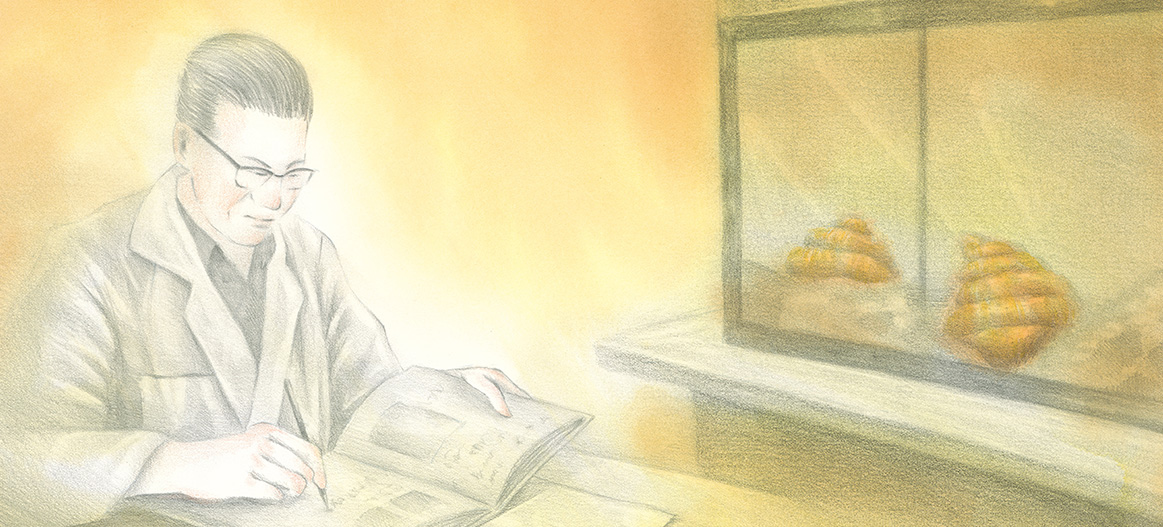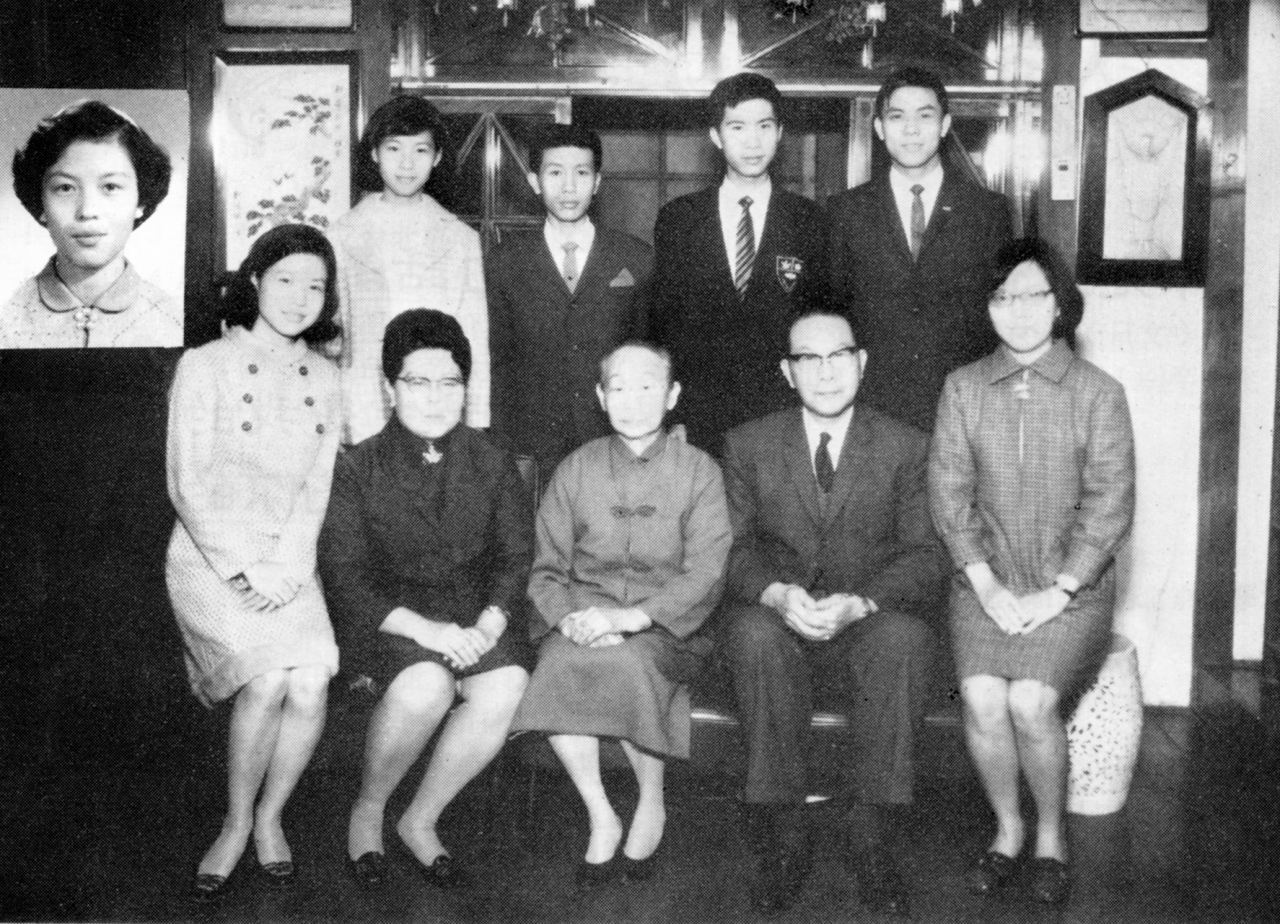
Granduncle's Treasures - The Story of Geologist Lin Chao-Chi【Parent-Child Reading Guide】
點閱次數:506
Taiwan’s Pioneer in Geology and Paleontology
Lin Chao-Chi

Born in Fengyuan, Taichung, Lin Chao-Chi (1910–1985) was the middle son of his family. He had four brothers in addition to a sister, who later married Liao Chi-Chun the painter. After graduating from primary school with excellent grades, he was admitted to Taichu Prefectural Second Middle School. The school was in general open only to the Japanese, and Lin was one of just two Taiwanese pupils in the class. Five years later, he graduated top of his year and was admitted to Taihoku Higher School, the only college-preparatory school in Taiwan at the time, where he elected the sciences as his major and began learning German.
When Lin again graduated with excellent grades from higher school, Taihoku Imperial University had only been established for two years. He was admitted, without having to sit for an exam, to the university’s mint Department of Geology and Paleontology under the Faculty of Science and Agriculture. At the time, Lin was the department’s only student, jointly supervised by four Japanese professors. The department head, Hayasaka Ichiro, was a devout Christian and taught Lin everything he knew. With Hayasaka’s recommendation, Lin completed his doctorate in geology at Tohoku Imperial University in Sendai, Japan, and became the first Taiwanese geologist.
Lin himself grew up in a Christian family. He was baptized at the age of 14 and served in the church enthusiastically. Lin and Ms. Wu Yan-Yan wedded on April 10, 1934, in a ceremony officiated by the Rev. Thomas Barclay at Thài-pêng-kéng Church, Tainan. Soon after, the couple moved to Manchuria and then China, where Lin taught in Hsinking Industrial University, Peking University and Peking Normal University, respectively. Due to Yan-Yan’s poor Mandarin and the instability of the times, the couple could not find a suitable congregation and had to stop going to church, until Lin took up a position at National Taiwan University and settled the family back in Taiwan in 1946. In November 1951, he was elected a church elder and remained in that position until his retirement at the age of 70. During that period, he served tirelessly as the Sunday school principal and the youth ministry counselor. He was committed to cultivating new generations of Christians.
The Lins provided much assistance to Chinese immigrants taking refuge in Taiwan, many of whom were students of his in China and Manchuria. The refugees had no relatives in Taiwan to turn to, so off the boat they boarded at Lin’s. There were as many as twenty of them living in Lin’s Japanese wooden house. When times got tough, Yan-Yan pawned her wedding gifts to feed the boarders. On Sundays, when Lin invariably had church work to do, his children had to get up earlier than usual to arrive, rain or shine, before eight at the church to help Lin open doors and windows and arrange desks and chairs for the Sunday school. The youths in the church frequently came to him for answers or advice, including those on employment and marriage matters, though he never intervened in his children’s job search.
 Lin Chao-Chi, Wu Yan-Yan and their children
Lin Chao-Chi, Wu Yan-Yan and their children
Lin also taught at Taiwan Theological College and Seminary and served on the boards of ecumenical institutions. He studied the Bible and prayed diligently. With unique insights into the Book of Genesis, he was the first in Taiwan to write on theistic evolution. As a scientist, he admirably approached the teachings of God with rationality and humility while keeping to his faith.
Lin devoted his life to geology and paleontology. His work made him an internationally renowned geologist. In academic circles, he was hailed as the father of Taiwan’s research into the Quaternary Period. The Shihsanhang archaeological site in Bali, New Taipei, and the Paleolithic Changpinian culture among the Pa-Hsien Caves, Taitung, were both first uncovered and studied by him and his colleagues. He read voraciously, and also participated in field surveys trekking into deep mountains and valleys. To save time, he often waded across bodies of water without rolling up pants, taking off socks and shoes, and letting the feet dry after crossing. Thus his knees and bones were damaged over time. His family frowned upon this and wanted him to take more rest. For Lin, however, “Knowledge is more important than life.” In other words, living without the quest for knowledge is no different from having a body without a soul.
The Lins had ten children in all. Half of them were born when Lin worked in China and Manchuria; three of the daughters died young. It could not be helped at a time of geopolitical conflicts and pre-modern healthcare. Still, the losses remained the couple’s greatest regret. Yan-Yan was the ultimate housewife who enabled Lin to throw his full self into academic pursuit. Their loving 51-year marriage, though old-fashioned, was ideal in its way and undoubtedly God-blessed.
Lin passed away in 1985 at the age of 76. He always saw himself as an ordinary person, relying on the faith he fortunately found young to set up goals, brave harsh circumstances, and eventually lead an extraordinary life as the giant on whose shoulders generations of Taiwanese geologists would stand.
*The publishers would like to thank Mr. Lin En-Peng, son of Prof. Lin Chao-Chi, for composing the Parent-Child Reading Guide and providing and rectifying the material that made this book. The story is based on anecdotes recounted by Lin Chiung-Hsien, Prof. Lin’s sister and wife of the painter Liao Chi-Chun, and her grandchildren Chen Yung-Wen and Chen Tung-Chieh. The well-preserved documents shared by Ms. Liao Min-Hui, the Liaos’ youngest daughter, were likewise indispensable.
 The characters of this story, from left: Mr. and Mrs. Lin Chao-Chi, Tung-Chieh (the little brother), Lin Chiung-Hsien (Grandma), Yung-Wen (the little sister)
The characters of this story, from left: Mr. and Mrs. Lin Chao-Chi, Tung-Chieh (the little brother), Lin Chiung-Hsien (Grandma), Yung-Wen (the little sister)
All photographs courtesy of the Lin family